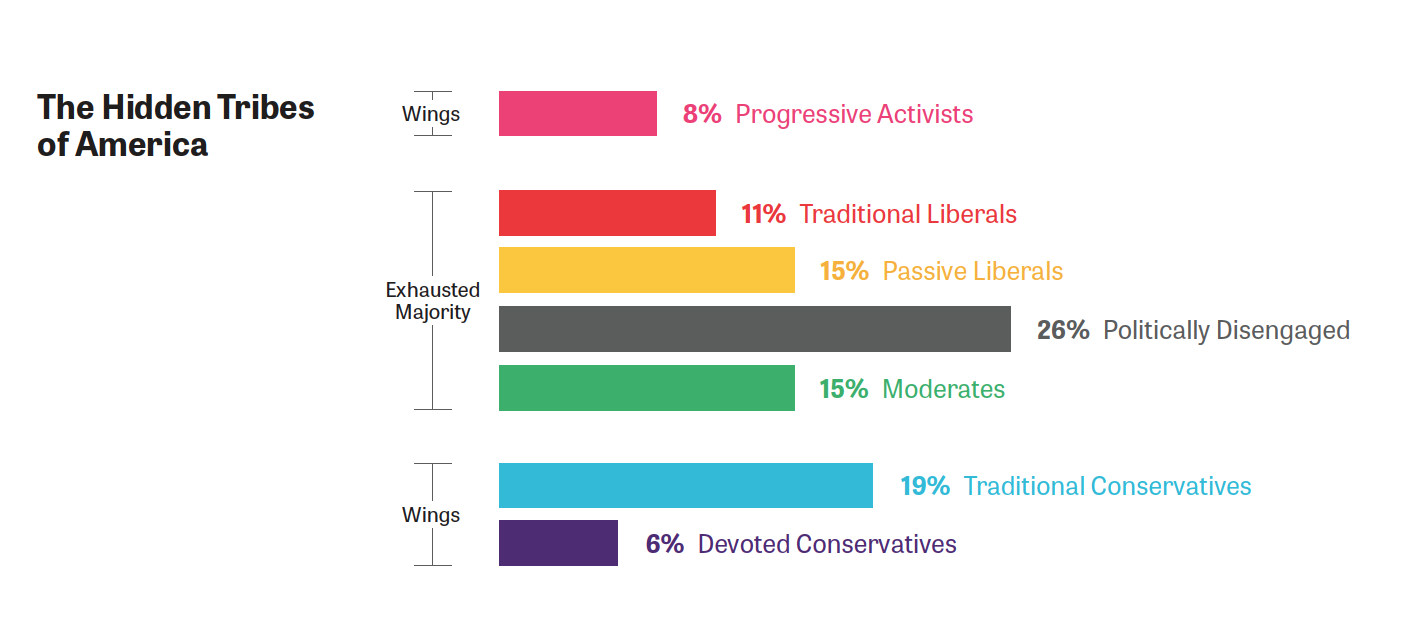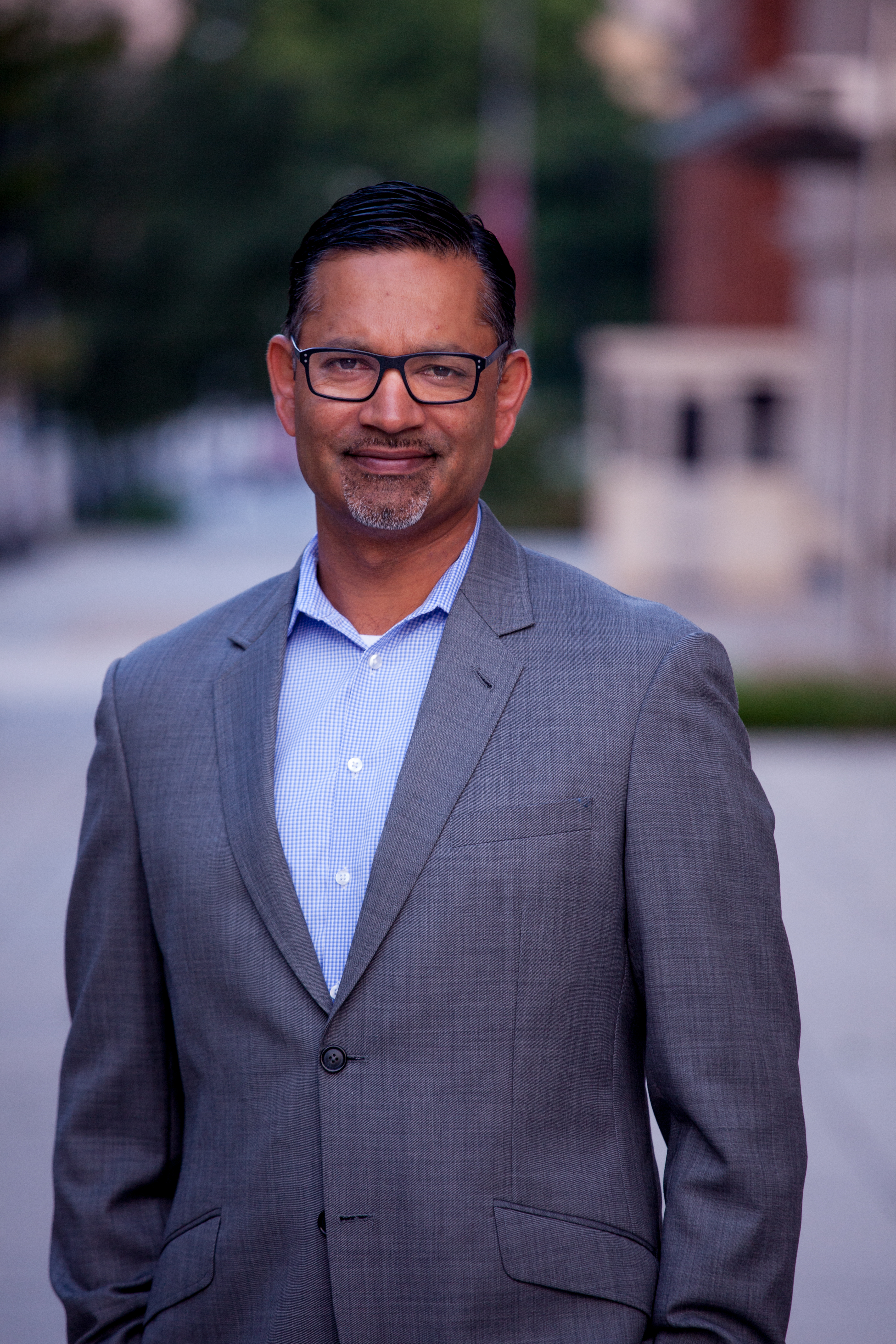
Out of Many, One: Immigration, Identity and the American Dream
Knight Foundation asked four leading scholars and community leaders to consider this question: “What is the most important trend that will transform how Americans think about community over the next decade?” Ali Noorani, Executive Director, the National Immigration Forum, shares insights below. Click here to download and view all essays.
Unprecedented global migration, how it is perceived and how it is experienced, is the prism through which we will understand the 21st century American community. How we respond determines what kind of America future generations live in.
In just over 25 years the number of international migrants in the world increased approximately 70 percent to reach 257.7 million. In the same period, the U.S. foreign-born population more than doubled to reach 49.8 million immigrants in 2017. Along the way, America experienced the Great Recession and economic disruptions driven by technology and globalization that changed the way we work and the way we relate to one another.
Over the course of 2018, the National Immigration Forum convened 26 Living Room Conversations to better understand how Americans are grappling with these changes. What we heard, what we learned, offers a roadmap for civic leaders across the political spectrum to help communities grapple with the politics of immigration.
Over the last few years, stories of mass migration have found their way to our homes, filtered through our news feed of choice, bringing a level of urgency to the debate. For many of us, when we see the Central American child on the train or the Syrian family in the raft, we are led to believe by certain press and politicians that they will be our neighbor in a matter of weeks. As our communities diversify, through marriage or migration, our new neighbor reminds us of what we saw on our screen. Diversity brings to our communities new languages, new customs, new religions. Our divisive politics define our perception, creating unease and insularity.
The fragmentation of traditional media and the powerful influence of social media bring these changes into sharp focus. We don’t trust our institutions, so we turn to our friends and family for the information and influence that shapes our opinion. For Americans worried that their children will not be better off than they are, it feels like the movement of goods, people, commerce, and ideas presents future generations an overwhelming set of economic and social challenges.
In some cases, leaders respond with a hardened politics, the building of actual and metaphorical walls, legislation that seeks to exert greater control at the local and national level. Paralyzed by anger and fear, the politics and policies of these communities stymie growth. And that feeds into the sense of victimhood as neighboring communities that embrace the challenges and opportunities of immigration see greater economic growth.
The combination of a more diverse America and a rapidly-changing economy has exacerbated a perception that immigrants and immigration are a threat, not a benefit, to American communities.
Those policy makers looking to lead more inclusive communities, buoyed by the rule of law, thrive with growing, diverse populations. They do the hard work necessary to help communities understand the changes around and beyond them. Fears are acknowledged and addressed, not dismissed and ignored. Programs and policies are put into place to welcome immigrants and refugees into the community without displacing native born residents.
The combination of a more diverse America and a rapidly-changing economy has exacerbated a perception that immigrants and immigration are a threat, not a benefit, to American communities. In this new normal, there are two paths we can take. One leads to an expanded sense of community, positively influenced by a diversity of sights, sounds and relationships that come from global migration. The second, darker path is more insular, narrowed by fears of immigration.
These days, it feels like America has chosen the second path where leaders are quick to sow seeds of xenophobia and division. The seeds that lead to cultural, security and economic fears define the questions that polarize the nation’s immigration debate:
- Culture: Are immigrants and refugees isolating or integrating? Do they live in isolated enclaves, or are they immersed in the community, learning English and becoming American?
- Security: Are immigrants and refugees threats or protectors? Are they national security or public safety threats, or do they make positive contributions to communities, even serving in law enforcement and in the military?
- Economy: Are immigrants and refugees takers or givers? Are they taking jobs and benefits, or are they economic contributors?
Rather than help Americans understand and facilitate the cultural and economic changes around them, supporters of immigration ignore these questions, while anti-immigrant forces weaponize them. Yet, we observed that when Living Room Conversations participants were able to voice their fears and feel heard, the discussion migrated away from division towards solutions.
Changing course requires us to understand the broader context of demographic change, the fears Americans have, and, more importantly, how to acknowledge and address those fears. Only then can America live up to the ideal of e pluribus, unum – “out of many, one.”
A Changing Nation
In a historical context, what we’re experiencing is not new. In 1890 and again in 1910, U.S foreign-born residents and citizens made up at least 14.7 percent of the nation’s population. Decades of xenophobia and political backlash followed the 1910 crest, resulting in multiple laws restricting immigration. Today, with 13.7 percent of the United States’ current population being foreign born, we are at a similar inflection point . What lies ahead depends on how Americans think about and engage with community.
Today, more than 40 million U.S. residents and citizens were born in another country. And, while immigration of generations past diversified the ethnic makeup of the nation, modern day immigration has made today’s America more racially and ethnically diverse than ever before. The Pew Research Center paints a colorful statistical portrait of America in 2016 where Mexican immigrants accounted for 26 percent of the nation’s foreign born, with the next largest origin groups are those from China (6 percent), India (6 percent), and the Philippines (4 percent). And America will only become more diverse in the years ahead, with Asians as a whole projected to become the largest immigrant group by 2055.
The diversification of America’s communities is not wholly dependent on future immigration. In fact, new U.S. Census estimates found that for the first time, in 2013 over half of babies born in the U.S. were non-white. Which means, “non-Hispanic whites will cease to be the majority group by 2044.
The challenge is that the combination of demographic and economic changes is hard to unpack for Americans who see their community and their livelihood changing at the same time.
For recent generations of Americans, a diverse America is the reality they were born into. But, for the nation’s Baby Boomers — those born between 1946 and 1964 — these were tectonic shifts that rattled their economic and social framework. In 1960, 88.6 percent of the U.S. population was white, dropping to 72.4 percent in 2010. In 1970, 4.5 percent of the nation’s population was Hispanic. Just 40 years later the Hispanic population quadrupled to 16.3 percent.
The challenge is that the combination of demographic and economic changes is hard to unpack for Americans who see their community and their livelihood changing at the same time.
In the 1990’s, as the nation’s immigrant population began to grow, the Baby Boomer generation peaked at 78.8 million. At this point, Baby Boomers were between 25 and 45 years old, and beginning to start their families, worrying about college tuition and job prospects for their children. And along comes immigration and globalization to fundamentally reshape their socioeconomic reality.
As American Action Forum President Douglas Holtz-Eakin said in 2016 before the House Ways and Means Committee, from World War II to 2007, the economy grew fast enough that GDP per capita — a crude measure of the standard of living — doubled on average every 35 years, or one working career. Coming out of 2008’s Great Recession, projections indicated that it would double every 75 years. And, in 2016, those households that worked full-time for the full year saw zero increase in their real incomes. As Holtz-Eakin put it, “The American Dream is disappearing over the horizon.” For many Americans experiencing this new reality, particularly as their children came of working age, immigration was a source of competition, not of optimism.
It isn’t hard to see why Americans are feeling stress and anxiety about their future. Demographic, economic and cultural shifts lead them to question their sense of community and turn too quickly to blame immigrants as the source of their problems. Our politics track this anxiety as the generational and geographic divide between political parties grows. So much so that the difference in generational diversity is driving not only a competing sense of community, but divergent political priorities.
Our starting point in this case is the fact that nearly half of Americans under the age of 20 are minority, while over three-quarters of those 65 and older are non-Hispanic white. William Frey, a Brookings Institution demographer, writes, “The rapid growth of minorities from the ‘bottom up’ of the age structure is creating a racial generation gap between the old and young that reflects the nation’s changing demography.” He finds that 75 percent of the population over age 55 is white, while 54 percent of those under age 35 are white – a “gap” of 21 percent, nationally. As a result, the lived experience of Baby Boomers is fundamentally different than Millennials; a difference that lays the foundation for very different perspectives on community.
Most importantly, Frey finds, “The gap is especially high in states that that have received recent waves of new minority residents to counter more established old whiter populations: Arizona leads all states with a gap of 33 percent.” Nevada, New Mexico, Florida and California round out the top five. With the exception of New Mexico, all five states have been the epicenter of heated immigration debates as older voters pressure lawmakers to clamp down on immigration through a range of local enforcement policies.
To state the obvious, our changing nation has changed our politics. The echo chamber nature of our political debate creates bubbles where perceptions of community are narrow and divisive. Driven by primary elections, policy makers have little incentive to explain these changes to their electorate, much less reach out beyond their base. As a result, a racial and geographic divide to our politics settles in.
Luzerne County, which includes and surrounds Wilkes-Barre, Pennsylvania, provides a 2016 election example. The county’s diversity index — which measures the variance of the racial and origin-based composition of a given population — increased by 360 percent from 2000 to 2015. It was one of the counties that saw a dramatic swing from blue to red in 2016. President Barack Obama carried Luzerne County by nearly 5 percentage points in 2012. Four years later, based on a campaign defined by racial and geographic fearmongering, President Trump carried the county by more than 19 points.
The racial gap between the parties grew in 2018. While 54 percent of whites voted for Republicans, African Americans, Latinos and Asians voted for Democrats at 90 percent, 64 percent and 69 percent, respectively. And, geographically speaking, urban and suburban voters preferred Democratic candidates, while voters in small towns and rural places favored Republicans.
Estimates indicate that by 2040, approximately 70 percent of Americans will live in the 15 largest states. Even as New York City, Los Angeles and Houston continue to see population growth, 30 percent of the country’s population — living in smaller states without major metropolitan centers — will hold disproportionate electoral power. Unless political and civic leaders have strategies to help communities understanding the changes they see (or read about), political dysfunction will lead to national tension.
Coming of age in big cities that include a greater range of economic opportunities, many (mostly liberal) Americans are insulated from the demographic and cultural changes Americans in suburban or rural communities struggle with. Diverse, urban environments have been built over generations, and the changes there have been steady and gradual. While not perfect or easy, cities allow youth and families to familiarize themselves with the idea of diversity. Over time, it becomes the norm as institutions in urban areas shape, and were shaped by, the diversity of the populations they served or engaged.
Suburban and rural parts of the country, home to an older and white population, with less access to the spoils of the technology economy, experienced these demographic changes more recently, and more dramatically. The changes that took place were proportionately larger, faster, and more acute – and accompanied changes as the global economy shifted. Demographic changes became a proxy for economic disruption.
Unless we change course, the political divide between young and old, rural and urban, will only widen as migration pressures are exacerbated by continuing economic shifts. Needless to say, the need for a different understanding of the American community has a certain level of urgency.
With or without immigration, the American community is becoming more diverse. As Richard Longworth of the Chicago Council for Global Affairs put it, “You can’t build a wall against hormones.” Which means we are not going to return to the Baby Boomer definition of America.
So charting a viable path toward compromise and common purpose requires us to meet people where they are, understanding the origins of their hopes and fears and reactions to their fast-changing communities. Our current politics and politicians limit the opportunities to do this kind of work. Ultimately, we must work together to hold elected officials from both parties accountable for divisive rhetoric.
Understanding the Fears
Deepened understanding of these fears and anxieties starts with careful listening. The National Immigration Forum works to engage conservative and moderate faith, law enforcement and business leaders living in the Southeast, South Central, Midwest and Mountain West, regions that have experienced some of the fastest growth in the foreign-born population and are struggling with the political and cultural changes that come with it.
In the sprint of 2018, Forum staff traveled to dozens of rural and suburban communities in conservative regions of the country to convene “Living Room Conversations.” We tapped into our networks of faith, law enforcement and business leaders to recruit 10-15 participants per conversation in order to better understand how conservative leaning rural and suburban communities perceived a changing America. A discussion guide designed by a team of researchers helped us lead robust and open conversations that included themes of identity, community and polarization, and perceptions about immigrants.
We launched this learning campaign to test our hypothesis that Americans grapple with three specific fears that lead to critical questions of our changing sense of community:
- Culture: Are immigrants and refugees isolating or integrating? Do they live in isolated enclaves, or are they immersed in the community, learning English and becoming American?
- Security: Are immigrants and refugees threats or protectors? Are they national security or public safety threats, or do they make positive contributions to communities, even serving in law enforcement and in the military?
- Economy: Are immigrants and refugees takers or givers? Are they taking jobs and benefits, or are they economic contributors?
To complement our findings, we partnered with More in Common, an international initiative to build stronger and more resilient communities and societies, which had just completed an exhaustive quantitative survey of the American public. More in Common’s report, “Hidden Tribes: A Study of America’s Polarized Landscape,” provides greater texture to these issues. Rather than a typical conservative versus liberal categorization of the public, their research led to a segmentation of the American public into seven tribes. Four of the tribes, they concluded, are a part of the “Exhausted Majority.”
More in Common’s findings aligned with the results of our Living Room Conversations, “Unsettling changes in our economy and society have left many Americans feeling like strangers in their own land.” They defined the Exhausted Majority as being:
- Fed up with the polarization plaguing American government and society
- Feeling forgotten in the public discourse, overlooked because their voices are seldom heard
- Flexible in their views, willing to endorse different policies according to the precise situation rather than sticking ideologically to a single set of beliefs
- Believe we can find common ground

Just because the Exhausted Majority is, well, exhausted, it doesn’t mean they agree on the issues. Their views on issues range across the spectrum but they are turned off by polarization, feel disregarded in the public discourse, and are flexible in their views. So, while there are certainly a large number of Americans trying to find consensus on our nation’s changing communities, finding that consensus requires careful listening.
As the authors wrote, “It would be a mistake to think of the Exhausted Majority merely as a group of political centrists, at least in the way that term is traditionally understood. They do not simply represent a midpoint between the warring tribes of the left and right. They are frustrated with the status quo and the conduct of American politics and public debate.”
This mirrors what we saw in our 26 Living Room Conversations across the country in 2018. Participants wanted leaders to hear their concerns. They sought information they can trust. And there was an unambiguous desire to rise above polarization and divisiveness in order to build coalitions and advance overdue policy reforms.
Before specific fears or anxieties came to the fore, questions of identity undergirded the conversation.
Francis Fukuyama wrote that the nation’s identity crisis is exacerbated by the perception of invisibility. “The resentful citizens fearing the loss of their middle-class status point an accusatory finger upward to the elite, who they believe do not see them, but also downward to the poor, who they feel are unfairly favored.” Therefore, “Economic distress is often perceived by individuals more as a loss of identity than as a loss of resources.
The perception that one’s job is going to be taken by the Mexican next door, or the Mexican in Mexico, creates a deep distrust of demographic change and the elites who seem so comfortable with it. Again, perception melds into reality and our political leaders are ill equipped to navigate the changes – or, more often, exploit the changes to divide rather than unite the electorate.
Fukuyama goes on, “The rightward drift also reflects the failure of contemporary left-leaning parties to speak to people whose relative status has fallen as a result of globalization and technological change.” The nation’s changes are much bigger than demography.
The authors of a new book, Identity Crisis, define “racialized economics” as “the belief that undeserving groups are getting ahead while your group is left behind.” As Washington Post columnist Dan Balz explained, “Issues of identity — race, religion, gender and ethnicity — and not economics were the driving forces that determined how people voted, particularly white voters.” We know from recent data that 69 percent of Americans — including 56 percent of Republicans — believe immigrants are “an important part of American identity.” But what shines through in our work, whether it was the Living Room Conversations or our broader approach, is that the when you localize the concept of “identity,” the term speaks as much to people’s hopes as to their fears.
“You’re a little bit of everything, and that’s really what America is … and that is the beauty and some of the angst in America … that you don’t want to give up your heritage.”
In Corpus Christi, Texas, we heard about the loss of American identity, while in Memphis, Tennessee, we heard that the church can be a powerful entity that organizes efforts to build transformative and inclusive national identities. In Gainesville, Florida, a man told us that “we are tribal and can’t handle difference,” whereas up the road in Tallahassee, we heard, “One of America’s proudest and most beautiful things is that it is a melting pot of cultures.” In Bentonville, Arkansas, a participant remarked, “You’re a little bit of everything, and that’s really what America is … and that is the beauty and some of the angst in America … that you don’t want to give up your heritage.”
Identity also speaks to a person’s community; which, at times, is different from the idea of an American identity. Numerous participants told us their identities were tied to their local communities, their neighborhoods, their sense of place. In Texas, unsurprisingly, there was a strong affinity with the idea of being “a Texan.” And Bentonville had a deep sense of civic pride when participants talked about the community’s growing diversity. Overlooking people’s economic concerns would be an error, but so would underestimating the power of identity as it underlies broader fears and anxieties people have.
With change taking hold all around them, we watched law enforcement officers, small business owners, and pastors — in real time — soul-searching, exploring what these changes mean to their own identities. Those who were hopeful saw their identities connected to larger themes of values and ideals. Those who were fearful found themselves in the midst of “an identity crisis.” But if they felt heard, if their opinion mattered, the tension melted out of the room.
So, why does the imperative to help America reimagine a sense of community in this global environment feel so challenging?
We need to move past binary arguments that attempt to delineate between race and class concerns. As our work has demonstrated, Americans experience immigration in a much more complicated way; our explanation of immigration, and engagement of the public, has to be just as complex.
Culture: Are immigrants integrating or isolating?
While cultural concerns are linked to identity, participants spoke to them in the context of a changing country, not always how they identified within those changes. For some participants, issues of race and ethnicity were central. For others, language determined whether an immigrant was integrating into American culture. Diversity and inclusion were also a consistent theme; as one participant in Fresno, California, said, “We don’t celebrate diversity … and too often it’s been us and them.”
A participant in El Paso, Texas, captured the tension between cultural integration: “It’s just easy to be American, and that is what this country is about, that we assimilate and unite as Americans … and I see that as a problem with some immigrants that want to isolate themselves and try to continue their own cultural behaviors — styles and behaviors … while they want to take advantage of the privileges of America … ”
In Appleton, Wisconsin, we heard that immigration “grows our culture, makes us more educated, [and] better people.” In Lubbock, Texas, a participant remarked, “I think [immigrants] bring a lot to our community by way of service and family values.” But in Las Vegas, Nevada, we heard that although immigrants are viewed as patriotic and hardworking, there were anxieties around a loss of cultural and language unity.
The conversations echoed More in Common’s findings: that freedom, equality and the American Dream are beliefs that make someone American, and that the ability to speak English can be valued as an important marker of American identity.
Security: Are immigrants threats or protectors?
Since the Sept. 11 attacks, security and terrorism concerns have loomed large in the nation’s immigration debate. More recently, the administration’s enforcement actions at the border and in the interior, along with progressive efforts to “Abolish ICE” and create “sanctuary cities,” have further polarized the debate. As the Trump administration falsely conflates immigration, terrorism and crime in order to achieve political goals, voters are left looking for information they can trust.
Our conversations indicated that personal relationships mitigated fears that center on security. People were willing to extend the benefit of the doubt to the “good” immigrants they knew. But many participants indicated that portrayals of immigrants as security threats are pervasive throughout the media. Therefore, even if people believe that such portrayals are misleading, what they read in the newspaper or saw on the television influenced their opinions.
Some 65 percent of Americans, including 42 percent of Republicans, do not believe that undocumented immigrants are more likely to commit serious crimes, according to Pew Research. This maps to reports that show, “immigrants are much less likely to commit crimes than the native-born.”
In the border town of El Paso, we observed a tension between some Americans wrestling with a desire to be compassionate as they fear threats posed by unauthorized immigration. The conversation in Mesa, Arizona, which included a handful of local law enforcement officers, revealed that although issues of legality and criminality continue to plague local residents’ perceptions and attitudes, participants generally agreed that immigrants do not pose an increased security threat. In Parker, Colorado, the sense among participants was that the broader community did believe immigrants posed a security threat.
Security fears are difficult to overcome. Even if someone feels immigrants are not a threat, one tragic incident, one hyperbolic headline, can plant a seed of doubt. All of which underscores the importance of local law enforcement in the conversation about the changing American community.
ECONOMY
We often hear that immigrants have a bootstraps mentality — they work as hard as they can to build a better life. Data suggest that these participants are echoing national sentiment. A 2017 Gallup Poll found that 45 percent of Americans believe immigrants make the economy better overall, compared with 30 percent who believe immigrants make the economy worse overall. It’s a sentiment that lines up with the contributions immigrants make to the U.S. economy: According to New American Economy, immigrants paid $105 billion in state and local taxes, and around $224 billion in federal taxes, in 2014.
Participants in southern border communities, where the economy is closely tied to Mexico and to immigration, recognized the economic benefit of immigration. In San Marcos, California, participants saw that the economy is dependent on the ability of businesses to buy and sell in both the U.S. and Mexico. There was general agreement among participants in Corpus Christi that immigrants were an economic benefit. On the other hand, thousands of miles from the border in Spartanburg, South Carolina, participants remarked that some in the community invoked the economy as a reason to close borders and deport people here without authorization.
Fears related to the economy can be persistent. We can address questions of culture and security only to have questions about jobs and trade linger. Business leaders, at the national or local level, can help Americans understand a changing community when they partner with other civic leadership. Speaking to American competitiveness and growth in a fashion that serves all workers, American and immigrant, helps people understand the value of immigration to the nation. When the message is immigrant-centric, people feel left out of the conversation, believing elites are looking for cheaper workers.
Changing Hearts and Minds
More in Common concluded, “To bring Americans back together, we need to focus first on those things that we share, and this starts with our identity as Americans.” Questions of race, religion, and patriotism led to competing frames that pushed people apart. But, “One belief that brings Americans together is a sense that the country is special.”
We observed that when Living Room Conversations participants with different religious or political beliefs felt that their individual concerns were being heard, the tension in their voices dissipated, and their faces brightened. The discussions turned towards solutions, not divisions. In our conversations, we saw the same theme More in Common found in their data: a need for new approaches and a different conversation on immigration that helps people come together.
Taken together, the Living Room Conversations left us with a powerful realization: American identity is being reshaped as perceptions related to culture, security and the economy are shifting. Quickly changing demographics are not solely responsible; the industries of the past are giving way to the industries of the future, and the transition from a post-industrial to a knowledge-based economy is disruptive. New technologies, social norms and conventions are accentuating the way many Americans view issues such as immigration. When it comes to identity in the context of culture, security, and the economy, there is both optimism and concern.
“It’s very easy to hate from a distance,” one participant in Spartanburg said. But as people get to know the immigrant family next door, at their child’s Little League games, or one pew over at church, they come to understand them, appreciate them, love them and value their individual contributions to the larger American story. The challenge in front of us is whether we can bridge the personal relationships with a broader perception of immigrants.
Which leads to the foundational question: What actually changes people’s hearts and minds? It is easy to assume, and a lot of social change campaigns do, that if you can change someone’s attitude or emotion towards something, you can change behavior. But that isn’t really true, or, at least it’s not the whole picture.
From the Theory of Planned Behavior we learn that campaigns that focus solely on creating an emotional reaction, shifting an attitude or even creating empathy, don’t tend to have sustained and lasting effects on behavior. In other words, the emotionally gripping story of a mother seeking asylum or a successful immigrant business owner offers a fleeting sense of what is possible. And in this media environment, that moment is quickly replaced by the next headline.
Taking a step back to offer an audience an emotion, attitude or empathetic moment connected to an underlying belief or value, allows for a conversation about change that can be sustained. And when that value or belief is connected to a person’s self-perception and connected to the norms of their community, there is potential for behavioral change.
The new normal is a fast changing, fast moving world that impacts the way Americans see themselves and each other. And, at least for the foreseeable future, the fears of migration and immigration will continue to be exploited for political gain.
Few politicians can step into this fray unless they are willing to cross partisan lines. Which is hard to imagine these days.
But local leadership — the pastor, the police chief, the local business owner – have the potential to bridge the divide. These are the trusted messengers who can operate within the networks of friends and family that are some of the most trusted places in society.
They are the local leadership with the trust and the credibility to help Americans understand the shifting nature of community in the context of global migration. They are trusted leadership who can meet people where they are, but not leave them there.
About the Author

Ali Noorani
Ali Noorani is the Executive Director of the National Immigration Forum, a non-partisan advocacy organization working with faith, law enforcement and business leaders to promote the value of immigrants and immigration. Growing up in California as the son of Pakistani immigrants, Noorani quickly learned how to forge alliances among people of wide-ranging backgrounds, a skill that has served him extraordinarily well as one of the nation’s most innovative coalition builders. Noorani is a member of the Council on Foreign Relations, holds a Master’s in Public Health from Boston University and is a graduate of the University of California, Berkeley. Noorani is a regular contributor to Boston Public Radio, the author of “There Goes the Neighborhood: How Communities Overcome Prejudice and Meet the Challenge of American Immigration,” (Prometheus, April 2017) and host of “Only in America” podcast. He lives in Washington, D.C.
Click here to download essay and view full footnote references. The author’s views expressed in this essay are his own.
you may also be interested in…
-
Community Impact / Report
-
Community Impact / Article
-
Community Impact / Article
-
Community Impact / Article
Recent Content
-
Community Impactarticle ·
-
Community Impactarticle ·
-
Community Impactarticle ·






